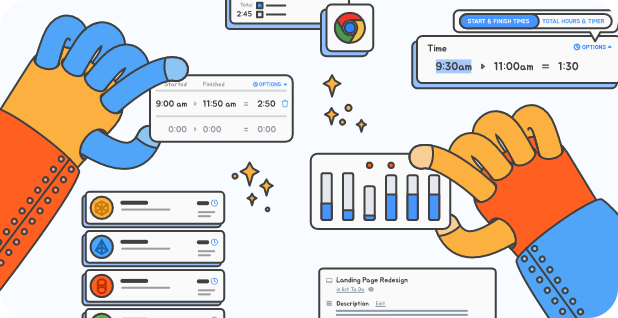How To Overcome Analysis Paralysis
How to Fight Analysis Paralysis and Reclaim Structure in Your Work Day
Analysis paralysis can feel like getting stuck in quicksand—no matter how hard you try to move forward, you sink deeper into confusion and hesitation. If you’re sitting at your office desk, this phenomenon can be especially frustrating, impeding productivity and negatively affecting your mental wellbeing. Fortunately, there are effective strategies to recognize, manage and overcome this condition, boosting your decision making skills and reclaiming your mental energy.

What is Analysis Paralysis?
Analysis paralysis is a state of overanalyzing a situation to the extent that making a decision becomes nearly impossible. It's often driven by fear—fear of making the wrong choice or concern over potential negative outcomes. This issue is common among individuals with a lower tolerance for risk or those who strive for perfection, significantly affecting both personal and professional lives.
A crucial step to overcome this issue is the ability to recognize that you’re experiencing analysis paralysis in the first place. Typical symptoms include excessive deliberation, heightened anxiety during the decision making process, and frequently seeking excessive amounts of information beyond practical necessity. If you're experiencing analysis paralysis, you may notice you often delay decisions or completely avoid situations requiring choice, which can lead to missed opportunities and poor long-term outcomes.
How to Recognize Analysis Paralysis Early On
The first step toward overcoming analysis paralysis is awareness. Understanding the signs helps you intercept the cycle early. Consider whether you are regularly experiencing difficulty in making decisions or finding yourself drained of mental energy due to prolonged indecision. Common indicators include a continual loop of "what if" scenarios and chronic hesitation when presented with multiple options.
Tactics for Overcoming Paralysis by Analysis
Set clear deadlines
One of the most effective methods to avoid analysis paralysis is setting clear deadlines for decisions. Time constraints encourage swift action and mitigate endless pondering. A definitive timeline makes the decision making process more structured, helping you manage your mental energy better and avoid burnout. If the deadline is long term, setting a time frame can also help you build more sustainable work habits, and stop you feeling like you have to rush through everything - again preventing burnout.
Limit your options
When too many options are available, analysis paralysis often worsens. Psychologist Barry Schwartz discussed this extensively in his book Paradox Of Choice, highlighting how too many choices lead to consumer behavior characterized by indecision and dissatisfaction. By reducing your options, you streamline your decision making processes, enhancing clarity and confidence in your final choice.
Embrace imperfection
Accepting that making mistakes is a normal part of the decision making process can significantly reduce fear-driven paralysis. Understand that making the wrong decision is inevitable, but each decision offers valuable lessons. Viewing decisions as opportunities for growth rather than potential pitfalls can positively impact your mental well being and foster a more balanced approach to taking risks.
Adopt a structured approach
Using structured frameworks for decision making processes can reduce anxiety and indecision. Techniques like SWOT analysis, decision trees, or simple pros-and-cons lists offer systematic ways to evaluate choices and make informed decisions effectively. These frameworks help clarify your thought process, simplifying complex scenarios and mitigating fear of negative outcomes.
Combatting Decision Fatigue
Decision fatigue often exacerbates analysis paralysis. Constantly making choices throughout the day can deplete your mental energy, leaving you vulnerable to indecision. To fight this, prioritize important decisions earlier in the day when your cognitive resources are highest. Reserve routine or minor decisions for later, when energy levels naturally decline.
Simplify daily choices
Reducing unnecessary decisions throughout your day minimizes mental drain. Simplify routine tasks, such as meal planning or choosing outfits, to preserve your mental resources for more critical decisions. This approach ensures that your cognitive energy is utilized for significant tasks requiring deeper thought and consideration.
Mindfulness and Mental Wellbeing
Practicing mindfulness is another powerful technique in overcoming analysis paralysis. Mindfulness helps maintain emotional stability, improves mental clarity, and enhances your overall mental wellbeing. Simple mindfulness exercises, such as deep breathing or short meditation breaks, can significantly reduce stress and anxiety, clearing the mental clutter that contributes to decision-making difficulties.
Seek professional support when necessary
Healthcare providers often recommend psychological support or counseling to individuals severely impacted by analysis paralysis. Professional therapists can introduce cognitive-behavioral strategies tailored to address decision-making anxiety, enhance emotional resilience, and improve overall mental well-being.
Enhance Your Risk Tolerance
Improving your tolerance to risk is another effective strategy to combat analysis paralysis. Gradually exposing yourself to lower-risk decisions builds confidence and reduces anxiety over the potential for negative outcomes. Over time, this approach enhances your comfort with uncertainty, preparing you to handle more significant, riskier decisions with greater ease.
Learn From Mistakes Rather Than Fearing Them
Instead of fearing the consequences of poor decisions, embrace them as integral learning experiences. Realize that missed opportunities often result from indecision rather than action. Shifting your mindset to appreciate the value of action—even imperfect actions—helps minimize the fear associated with decision-making and promotes more proactive behavior.
Pracitcal Exercises to Strengthen Decision-Making Skills
Incorporating practical exercises into your routine can further mitigate over thinking. Activities like role-playing different scenarios, quick decision-making drills, or simulations can train your brain to become comfortable making informed decisions swiftly and confidently.
Role-playing
Role-playing scenarios are particularly effective in enhancing your ability to make decisions under pressure. By practicing hypothetical situations, you can rehearse responses and build cognitive frameworks that streamline real-life decision-making.
Decision drills
Regularly practicing quick decision drills on minor daily choices enhances decisiveness. Setting a time limit (such as one minute) to choose helps you train your brain to act quickly and confidently, reducing susceptibility to prolonged indecision.
Reflection and Continuous Improvement
Reflecting regularly on your decision-making experiences can improve your overall approach. Documenting decisions, their outcomes, and your emotional state can offer insights into patterns, helping you recognize and adjust behaviors contributing to analysis paralysis.
Analysis paralysis is a common yet manageable barrier in the workplace and personal life. Recognizing its symptoms, setting deadlines, simplifying choices, and embracing structured decision-making frameworks can greatly reduce its impact. Mindfulness practices, professional support from healthcare providers, and exercises to improve risk tolerance further enhance your ability to make informed decisions confidently. By adopting these strategies, you can transform indecision into effective, decisive action, optimizing both your productivity and mental wellbeing.















